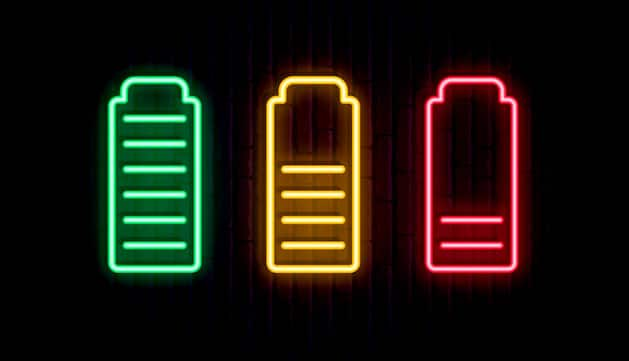The rolled up electrodes of these batteries are held together with plain PET tape. However, when the battery heats up, this commonplace plastic breaks down into dimethyl terephthalate (DMT) – and this molecule acts like an electrochemical shuttle, discharging the battery.
Lithium-ion batteries are the most important power suppliers for mobile technology – from mobile phones to laptops to electric cars. Their high energy density, comparatively low weight and long service life make these batteries almost indispensable. However, even they are not perfect: After prolonged use, lithium deposits lead to a gradual loss of performance and if they get too hot, lithium batteries can even explode.
And there is another problem that almost everyone has already experienced in everyday life: even if lithium-ion batteries are not in use, they lose their charge over time. Scientists have long suspected that a so-called redox shuttle is to blame for this self-discharge. This is an electrochemically active molecule that is reduced at the cathode of the battery and absorbs an electron in the process. Then it migrates to the anode and is oxidized there again by giving off electrons.
“For every electron that is transported in this way from the negative to the positive electrode, a lithium ion also moves there and thus causes self-discharge,” explain Sebastian Buechele from Dalhousie University in Halifax, Canada, and his colleagues. But which molecule is behind it? And where does the molecular shuttle in lithium-ion batteries come from?
In order to clarify this, Buechele and his team have carefully examined various types of lithium-ion batteries, including the NMC batteries installed in electric cars, laptops and other mobile devices. To do this, they exposed the batteries to different temperatures, took them apart and checked their chemical composition and the electrochemical behavior of the individual components.
It turned out that when the batteries got warm, their normally colorless electrolyte became increasingly discolored. At more than 25 degrees it turned slightly yellowish, then orange and finally at 70 degrees intense dark red. At the same time, the electrochemical measurements indicated an active redox process in the batteries. The team was then able to clarify which molecule was responsible for this through chemical analyzes using gas chromatography-mass spectrometry, among other things.
The surprising result: “According to our experiments, only dimethyl terephthalate (DMT) can be considered as a potential redox shuttle in the electrolytes,” report Buechele and his colleagues. However, this organic compound with a benzene ring is nothing more than the basic unit of the common plastic PET (polyethylene terephthalate). The charge-stealing shuttle molecule is therefore a component of the plastic that is found in plastic bottles and countless everyday objects.
But how does this plastic end up in lithium-ion batteries? The PET plastic is not part of the active battery components. But in common battery cells, tape is used to hold the tightly rolled layers of electrodes together — and that tape is made of PET. “We never expected that because nobody pays attention to these inactive components,” says senior author Michael Metzger from Dalhousie University. “But it’s the chemical breakdown of this tape that creates the redox shuttle molecule.”
A simple adhesive tape is therefore to blame for the fact that lithium-ion batteries discharge themselves over time. As soon as the battery warms up a little, chemical reactions begin that attack the plastic and break it down into its basic units. The released dimethyl terephthalate then becomes the electrochemical shuttle that gradually discharges the battery.
“This is a commercially significant discovery,” says Metzger. Because thanks to this knowledge, the discharge problem can now be solved. Replacing the PET adhesive tape with another, less susceptible material also eliminates the risk of discharging DMT. “It’s a small thing, but it can definitely help make batteries better,” says the researcher. The team is already in contact with battery manufacturers, including Microsoft.
“Self-discharge is an important issue for them,” says Metzger. “One of the engineers said to me, ‘I heard you guys spotted a problem with the PET tape’. I then explained to him that this is the cause of the self-discharge and asked him what they use in their battery cells. The answer was: PET tape.” (Journal of The Electrochemical Society, 2023; doi:10.1149/1945-7111/acaf44)
What: Dalhousie University
This article was written by Nadja Podbregar.
Lucas Cordalis did not exactly become a crowd favorite in the jungle camp. Even behind the cameras there was little sympathy for Daniela Katzenberger’s husband, as show author Micky Beisenherz has now revealed.
Anne Will surprised a few weeks ago with her soon-to-be talk show – something has also changed privately with the presenter: she is said to be newly in love. Her new friend is 26 years younger and writer Helene Hegemann.
The original to this post “That’s why lithium-ion batteries discharge themselves” comes from scinexx.








